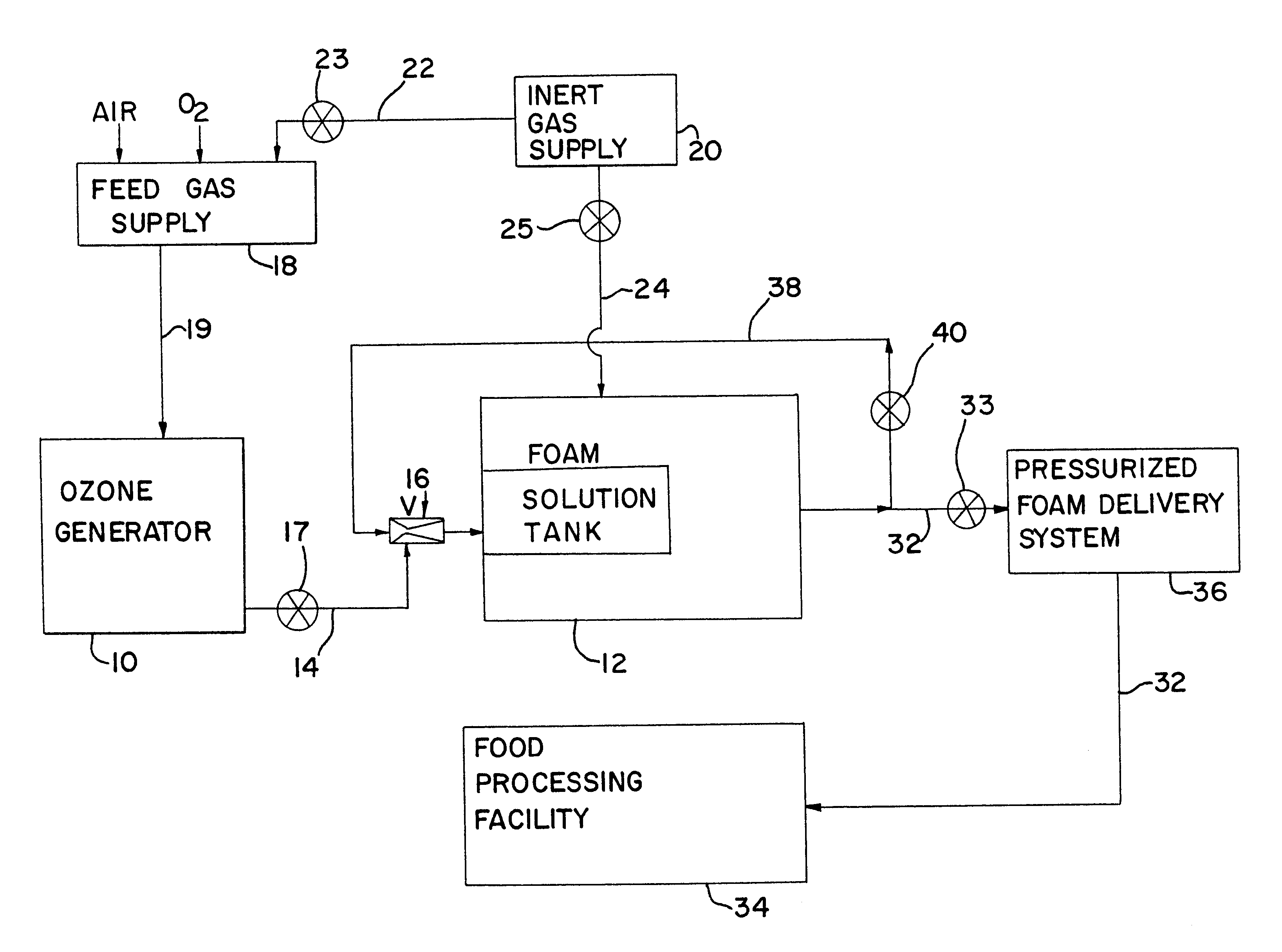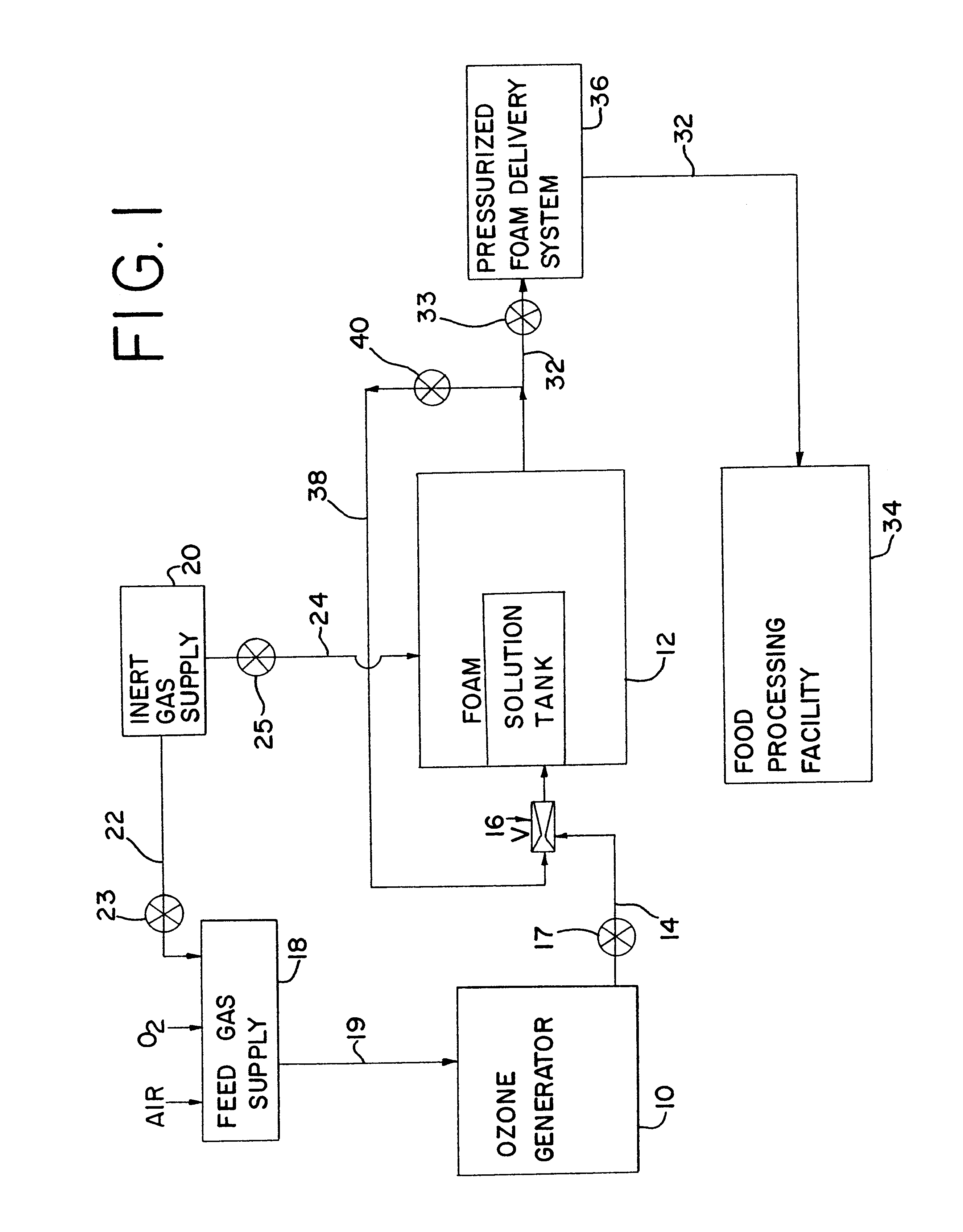Ozonated foam medium and production system and method for sanitizing a food processing environment
- Summary
- Abstract
- Description
- Claims
- Application Information
AI Technical Summary
Benefits of technology
Problems solved by technology
Method used
Image
Examples
Embodiment Construction
The following experiment was conducted to illustrate the benefits of applying ozone in a foam-sanitizing medium to a surface to be sanitized.
About 300 liters of water was chilled to a temperature of about 4.degree. C. Then, the surfactant "Polysorbate 20" was added to form a surfactant concentration of about 0.5% by weight. Next, a gas mixture containing ozone and O.sub.2 and having an ozone concentration of about 3 to about 4% by weight was injected at a rate of about 0.4 cubic meters per minute using a venturi-type injector to create ozonated foam. The ozone concentration in the foam was measured using the DPD colorimetric method (4500-Cl g.), as described in "Standard Methods for the Examination of Water and Wastewater," 19.sup.th Ed., American Public Health Association, 1995.
After preparing the ozonated foam, ozone concentration measurements were periodically taken to determine the rate of ozone depletion within the ozonated foam. The results of the ozone concentration measureme...
PUM
| Property | Measurement | Unit |
|---|---|---|
| Fraction | aaaaa | aaaaa |
| Percent by mass | aaaaa | aaaaa |
| Fraction | aaaaa | aaaaa |
Abstract
Description
Claims
Application Information
 Login to View More
Login to View More - R&D
- Intellectual Property
- Life Sciences
- Materials
- Tech Scout
- Unparalleled Data Quality
- Higher Quality Content
- 60% Fewer Hallucinations
Browse by: Latest US Patents, China's latest patents, Technical Efficacy Thesaurus, Application Domain, Technology Topic, Popular Technical Reports.
© 2025 PatSnap. All rights reserved.Legal|Privacy policy|Modern Slavery Act Transparency Statement|Sitemap|About US| Contact US: help@patsnap.com



